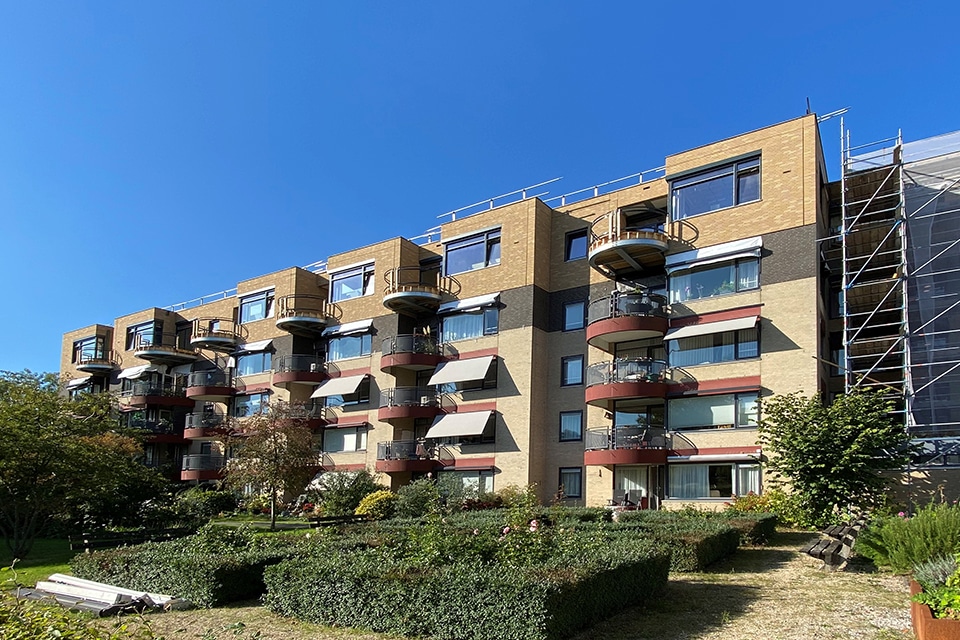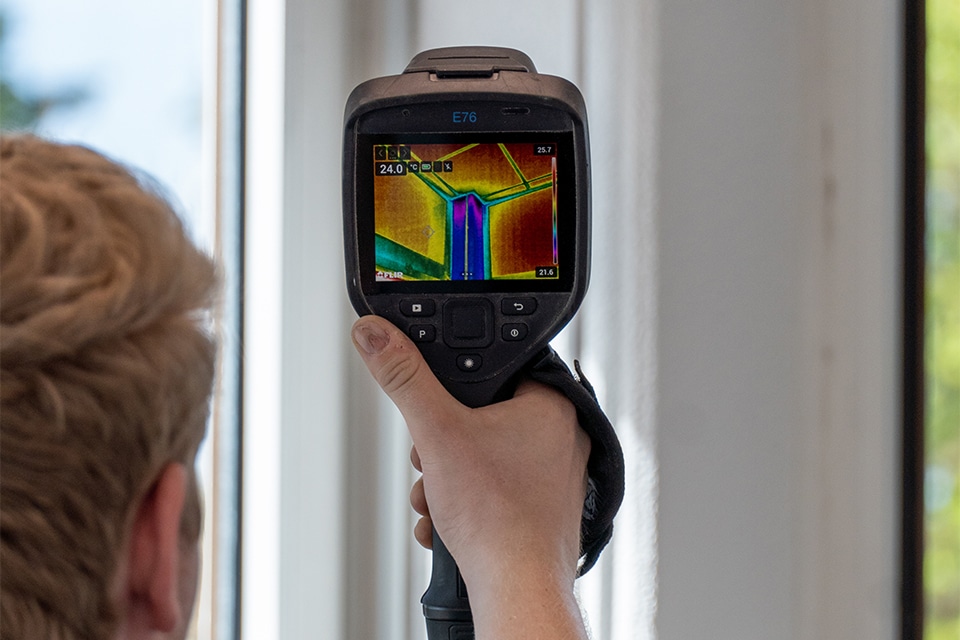
Do a BlowerDoor test and/or thermographic examination!
Want to be sure a home or building meets the requirements around airtight construction?
Insufficient air sealing in the roof connections, open conduits in the meter cupboard and insufficient air sealing between the frame and window frame: these are according to BlowerTechnic the most common causes of air leaks in homes. Air leaks that often can be easily remedied when their location and size are clear. An air tightness measurement (also called: inflation test or qv;10-measurement) by BlowerTechnic can help and shows whether a building complies with the Building Act, the environmental permit and/or the BENG requirement.
"The BlowerDoor test is the best means of measuring the airtightness of a building," begins Bas van Galen, Managing Director of BlowerTechnic. "The resulting report can not only be used as evidence for the Building Quality Assurance Act (Wkb), but also helps to make targeted improvements to the airtightness, user comfort and energy efficiency of a home or building."
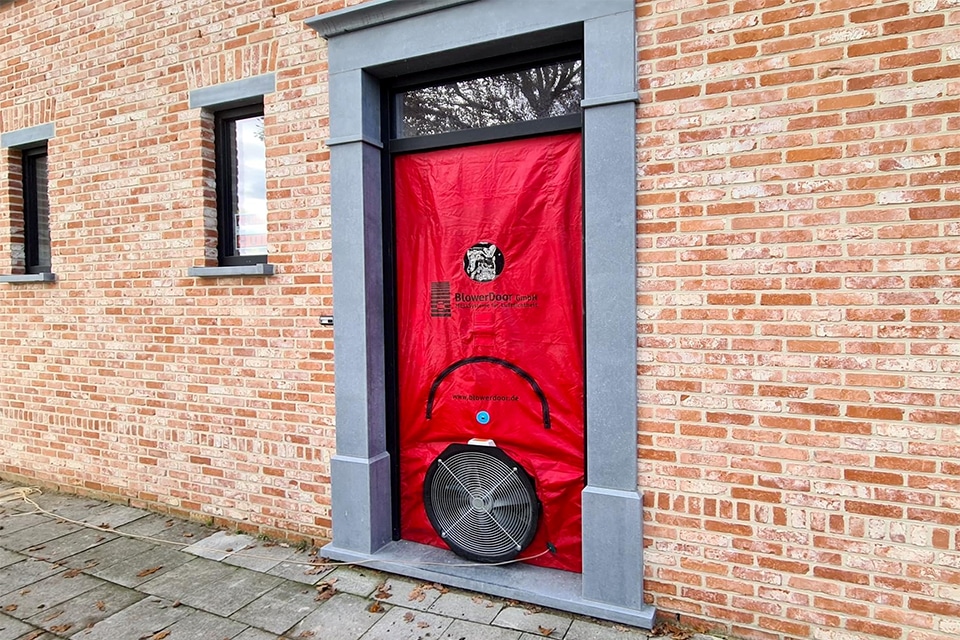
Reliable results
BlowerTechnic specializes in airtightness and thermography. The company does not guarantee low numbers, but reliable results. For example, when it comes to the airtightness of homes or buildings. "Here, we prefer to use BlowerDoor's test equipment, such as a fan and pressure gauge that accurately measures the air permeability (or rather, air loss) of homes and buildings," Van Galen said. "During the test, the home or building is temporarily exposed to an under- or overpressure of 10 to 100 Pa (0.1 to 1 mbar). By then measuring how much air escapes from the home or building, clients get an accurate impression of the airtightness."
Monitoring tool or baseline measurement
These clients are mainly contractors, owners' associations and private individuals, who often use airtightness measurement as a means of control or as a baseline for home improvement. For example, when draft complaints are experienced or when energy bills are rising too far. "A successful BlowerDoor test also earns an ENE 26 credit from BREEAM-NL," Van Galen knows. "And Passive House and LEED also place great emphasis on the airtightness of homes and buildings. Those who want to qualify for these sustainability labels can also get good advice beforehand."
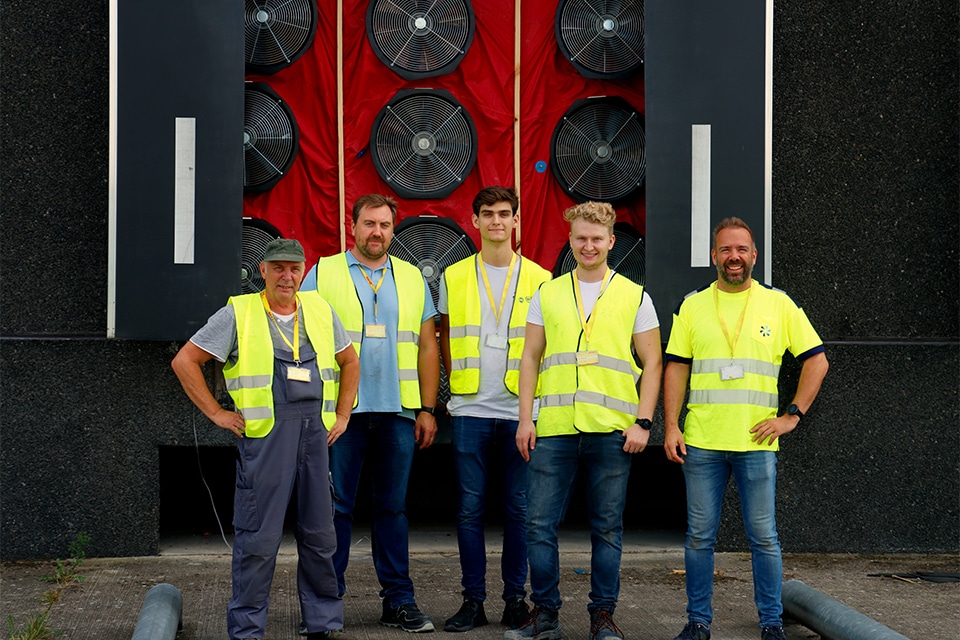
Good score = little air loss
The degree of airtightness is indicated by an air density class, which in the Netherlands is expressed as a qv;10 value. "The degree of air density is classified into three classes based on NEN 2687:1989, where the lower the Qv;10 value, the more airtight the home is," Van Galen said. "Whereas the Building Code prescribes a Qv;10 of > 1 dm3/s.m2 (Class 1), a qv;10 between 0.3 and 0.6 dm3/s.m2 (Class 2) is now the desired standard. For Passive houses and very low-energy buildings, a Qv;10 of < 0.15 dm3/s.m2 (Class 3) applies." When a house or building scores well in the BlowerDoor test, it means that there is little air loss, he emphasizes. "In this case, it is comfortable inside, there are no annoying air currents or drafts, and rooms can be heated or cooled easily and with less energy."
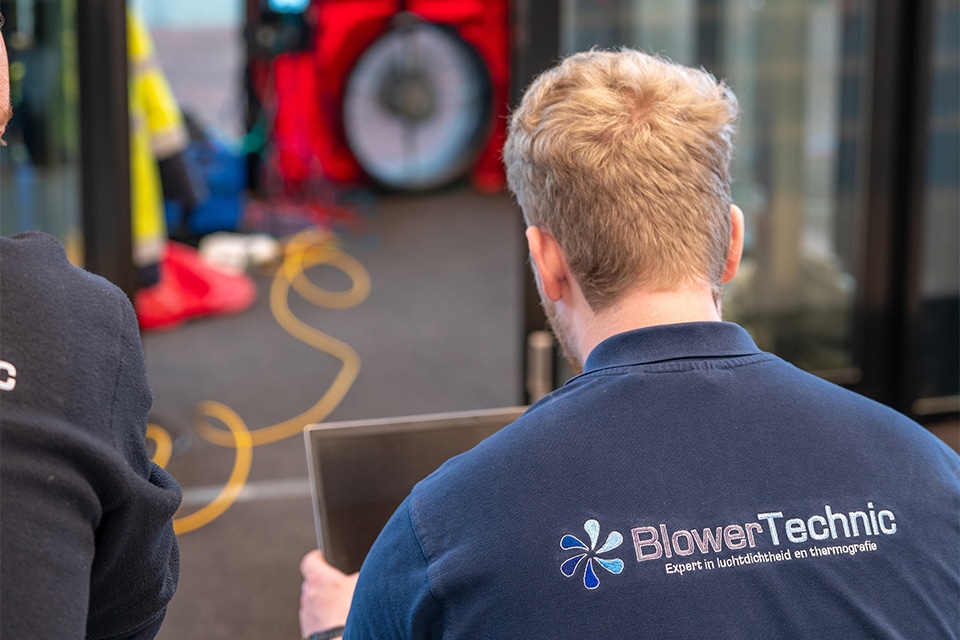
Thermographic examination
If the airtightness of a home or building turns out to be insufficient, BlowerTechnic can already see, during the BlowerDoor test and with the help of a thermographic camera, where cold air enters and warm air escapes. "In homes and buildings, cold air often flows in through holes and cracks," Van Galen explains. "This cold air leaves a print, which is clearly visible through the thermographic camera and any smoke survey. Combined with our comprehensive advice, the contractor can then work in a targeted way to improve the airtightness of a home or building."


